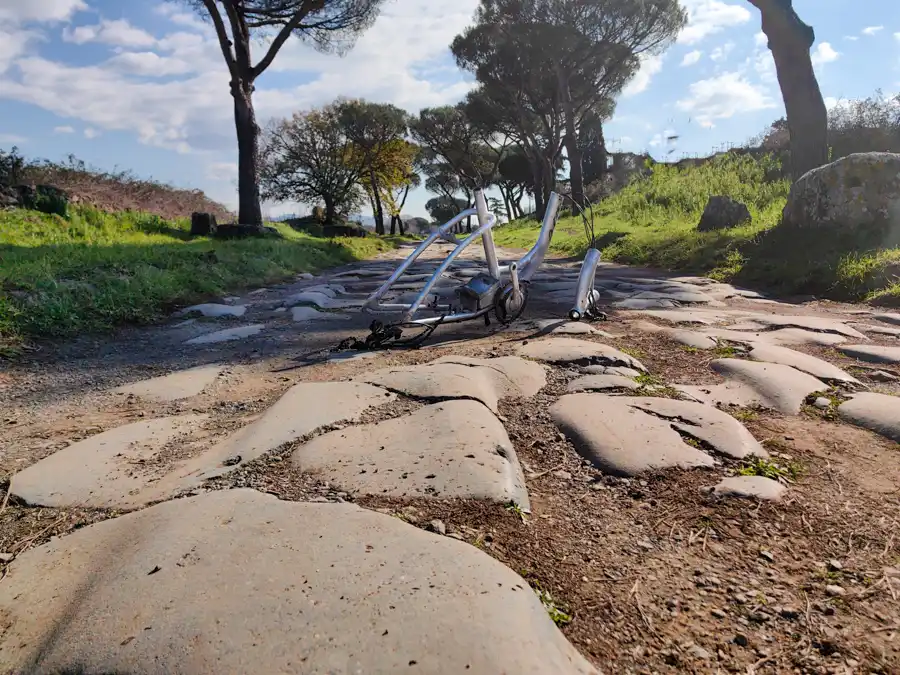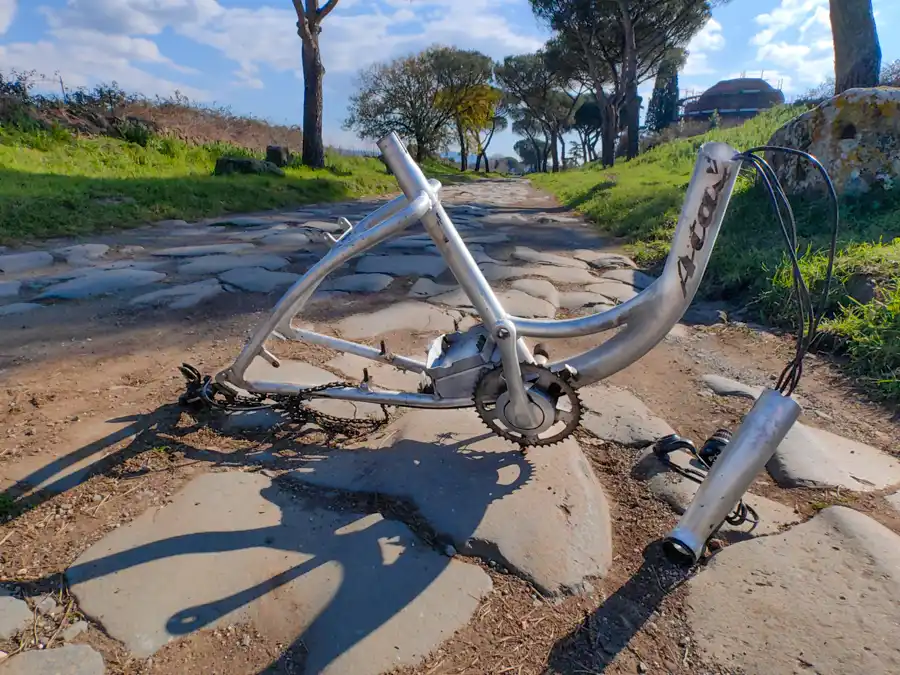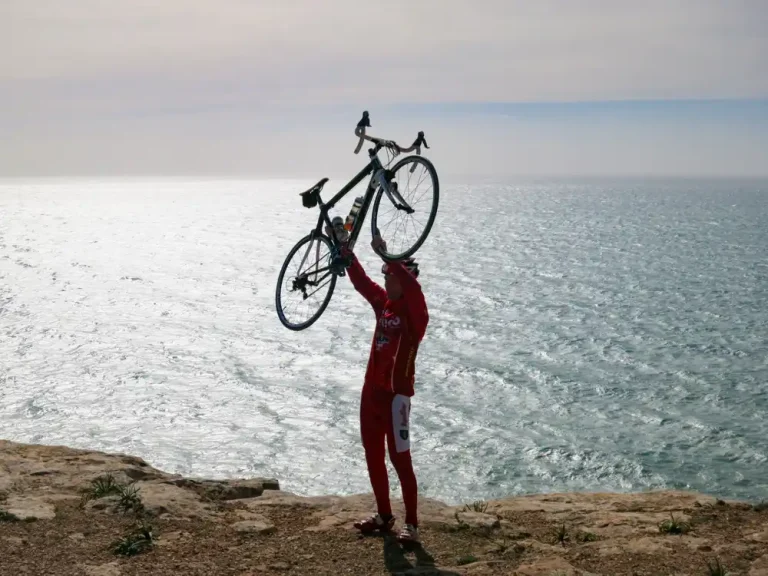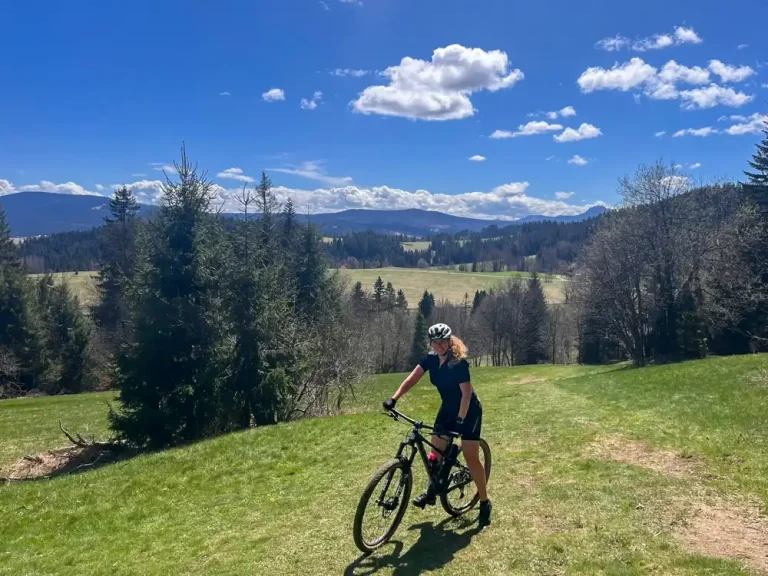Spartacus could talk about the law of attrition. But I had no idea that we would experience the law of torment. Via Appia Antica in Rome, or how you can rip all your discs and vertebrae for history’s sake.
The metro’s not close. The Circo Massimo stop is about 1.5 km from Porta San Sebastian, where Via Appia officially begins. The first milestone on the right is part of the retaining wall.

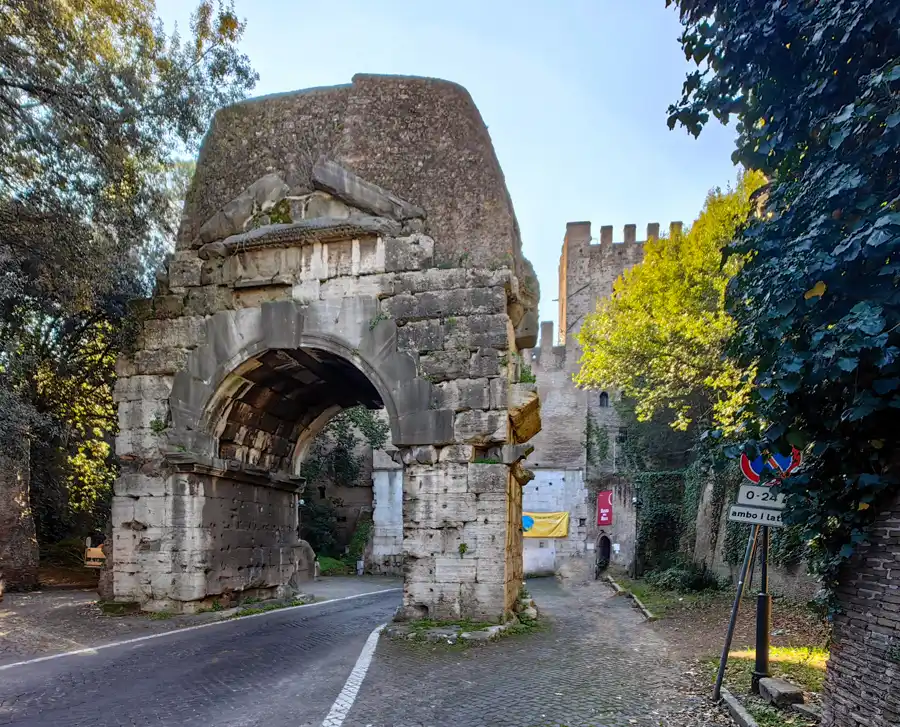
Today, the Via Appia has been adapted from Rome almost to the level of Ciampino Airport and the village of Poggio delle Mole. On bicycles, we rode 16 km of the reconstructed part (now a regional historical park). After all, the road has been paved since time immemorial. 🙂
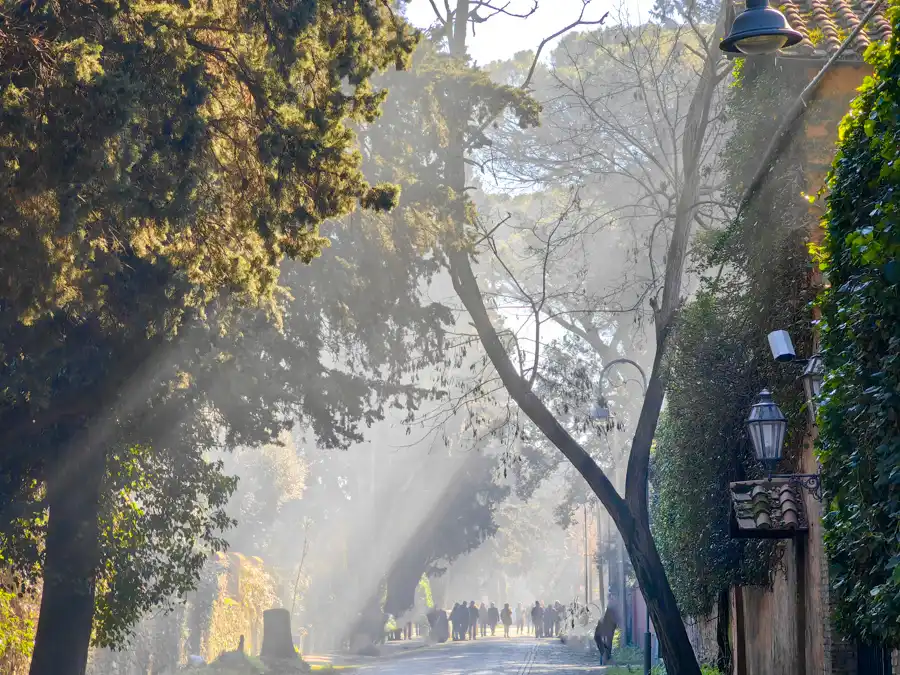
Despite the expected azure sky, Via Appia welcomed us with a mysterious veil. Who knew it was just a local farmer burning garden remains?
Via Appia Antica
The cobbled stone road is nicknamed “Regina Viarium”, the queen of the roads, firstly because of the importance of the road but also because of the beauty of the surrounding landscape. The Via Appia Antica passes through avenues of green cypresses, yew trees and many ruins that line the cobbled road. The lapidaries of our museums boast a few fragments of ancient arches. Here you can hop around on the ruins. They are everywhere.
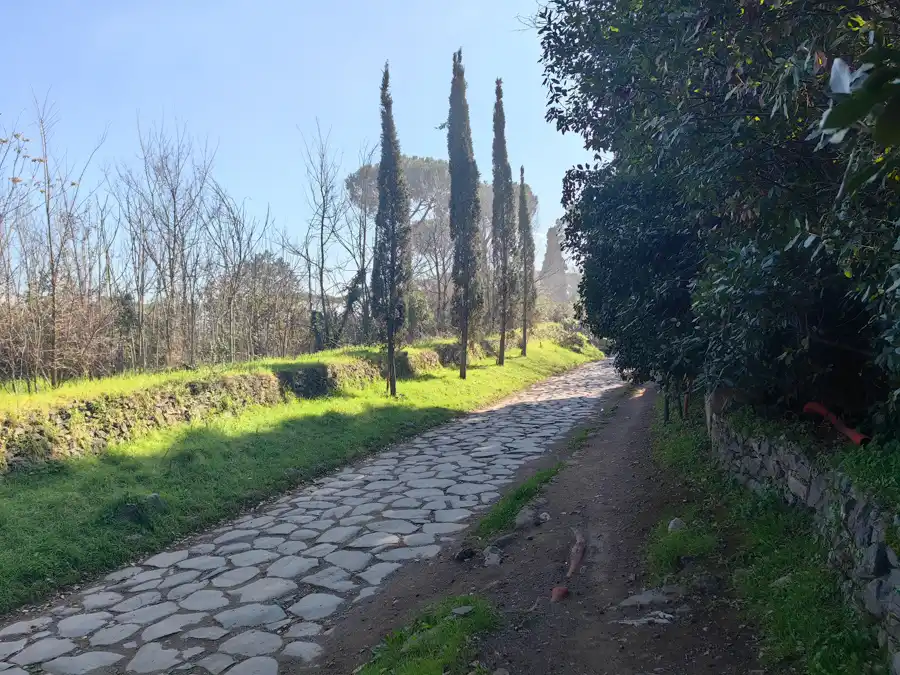
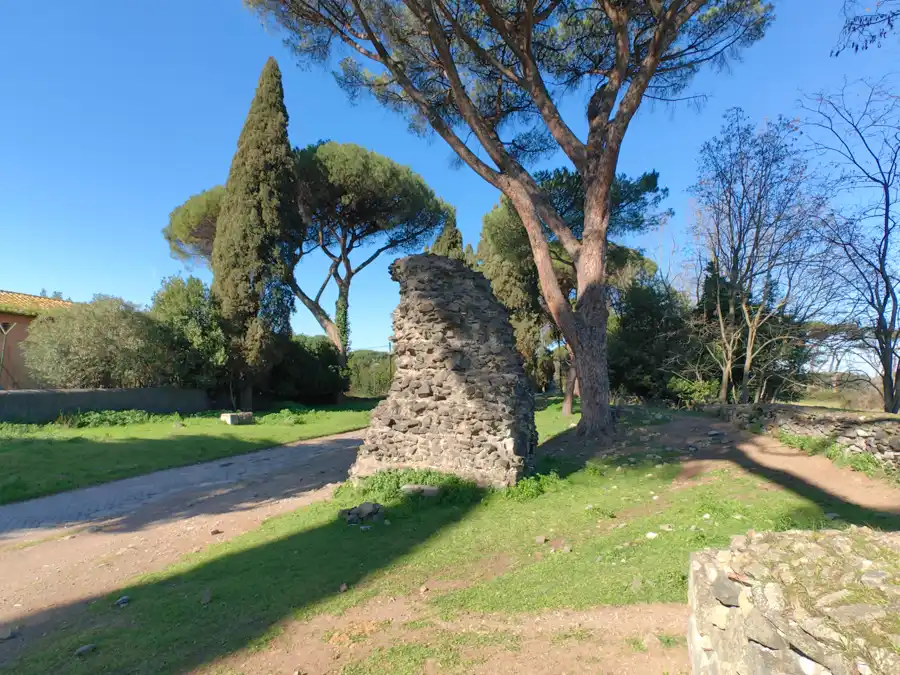
The oldest road in the world
The Via Appia Antica is one of the oldest roads in Rome. It was the most important road in the Roman Empire. Historically, it ran almost 600 km from the centre of Rome to Brindisi at the very heel of Italy.We didn’t attempt to walk the whole of it.🙂
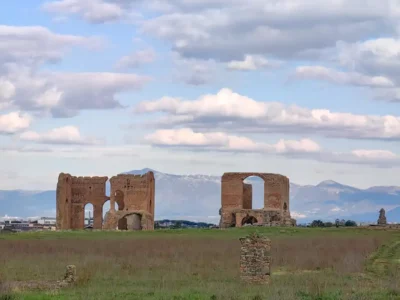
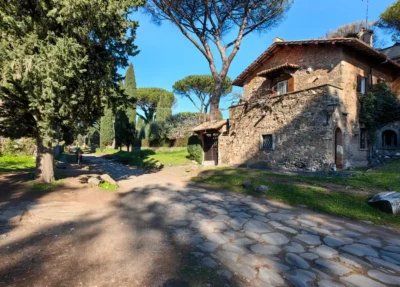
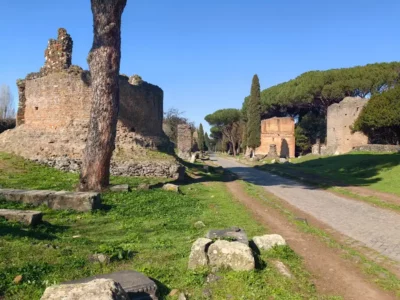
The cobbled road was named after the consul Appius Claudius Caecus. As a government official subordinate to Caesar, he was responsible for its entire implementation and the construction of Rome’s first aqueduct: the Aqua Appia, which provided Rome’s water supply. He has been more efficient than slovak NDS. Construction of the first section of the road began in 312 BC and was completed in 190 BC.
First, the dirt road was levelled, and small stones and mortar were laid on top. Gravel was added, and the firm, interlocking stones formed a flat surface. Slovak road builders could learn something about road construction from the ancient Romans.
Via Appia on bikes

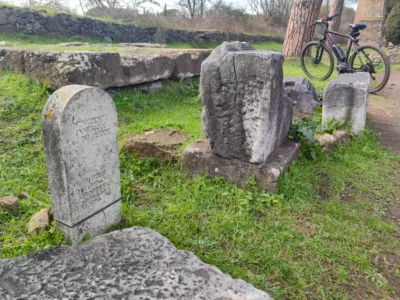
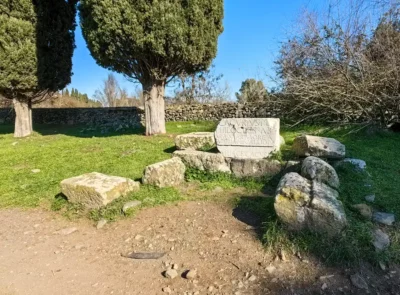
In any case, the Appia Antica was built to withstand the ravages of time. Which it largely succeeded in doing. We couldn’t get enough of the paved road on our bikes.
Part of the road still has the original paving stones, which show the wear and tear of the wagon tracks. After five kilometres on them, my lumbar nerve disc was the first to go-out.
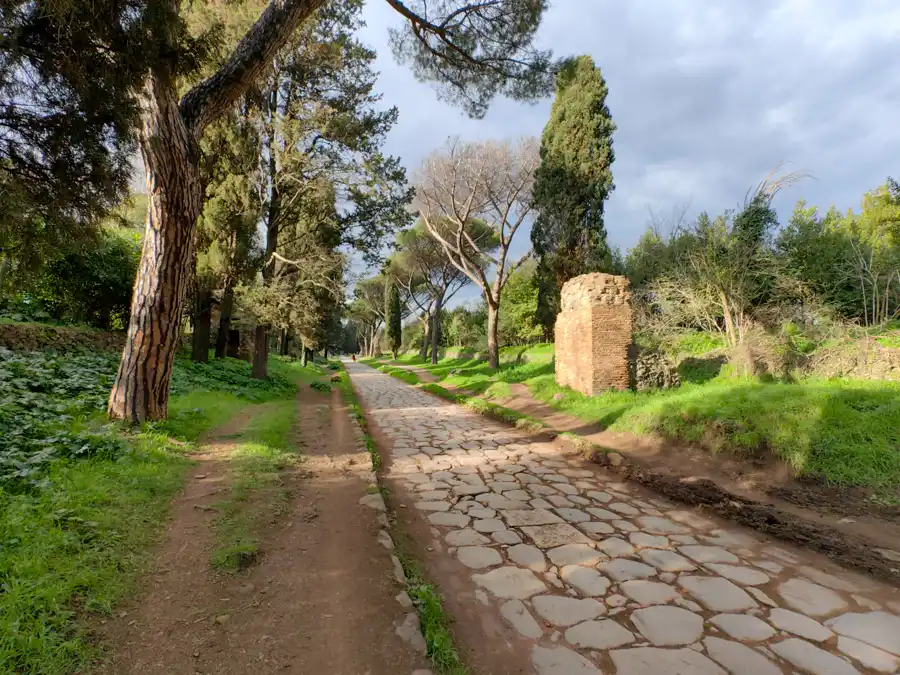
We /where we could/ gladly replaced the cobblestone road with dirt paths that run just beside the road. Even so, in the end, we were serously exhausted that we stopped. Officially for taking pictures, unofficially because of a knocked-out spine.
Antiquity and Early Christianity


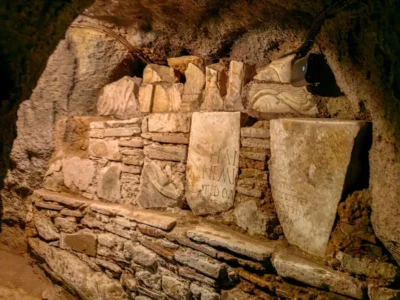
The beginning of the route is about early Christianity. In tradition, Jesus met Peter in the church ‘Domine Quo Vadis‘. Peter was fleeing Rome at the time but returned after meeting Jesus. There is even a stone in the church that supposedly bears the footprint of Jesus.
There are many catacombs and tombs underground, as in Roman times, it was forbidden to bury the dead within the city walls. Several burial grounds have been built along the main roads. One of the most significant underground burial grounds (the Catacombs of San Callisto) has more than 170,000 graves, and it is easy to get lost here.
To lighten our tired backs, we entered the Catacombs of San Sebastiano under the holiest church, the Basilica di San Sebastiano. It is one of the seven most important pilgrimage sites in Rome. Next to the last statue of Bernini, you’ll find a vending machine that will cut out a commemorative coin for 3 euros. We preferred the presso for a euro.
Circus Maxentius
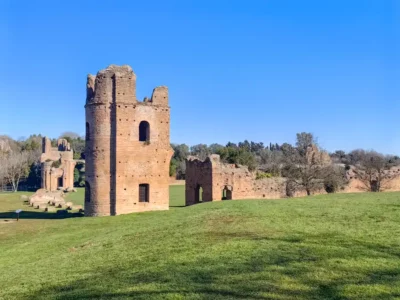
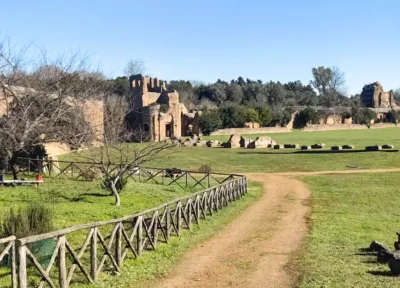

After about two kilometres, we reached the best-preserved section of the Via Appia Antica. You can tell that they don’t allow cars here anymore. Even those that would dare would have to have extraordinary offroad equipment. The remains of the Circus Maxentius, an ancient racetrack, are better preserved than the Circus Maximus itself. The obelisk that initially stood here has been relocated to Piazza Navona.
The whole road is lined with tombs. Probably because they got cheaper the further you got from the city. The investment business was booming in antiquity. The most famous and most significant of the tombs is that of Cecilia Metella, about five kilometres outside the town. But we greedily resisted the lure of admission.
Cecilia Metelia
Tomb of Cecilie Metella.

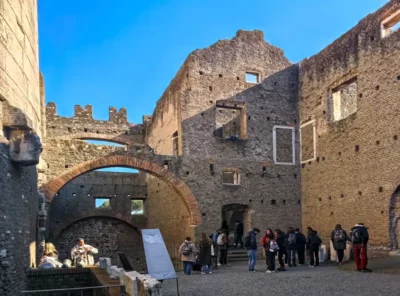
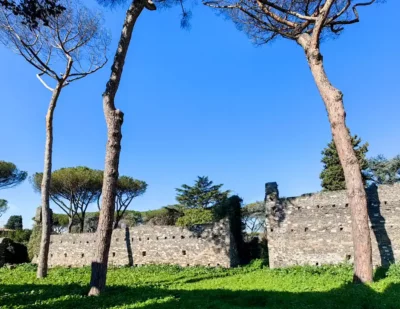
Villa Quintili
On the way, you will also find Villa Quintili. It was once a very luxurious villa and residence of Emperor Commodus, who preferred a quiet life in the countryside.
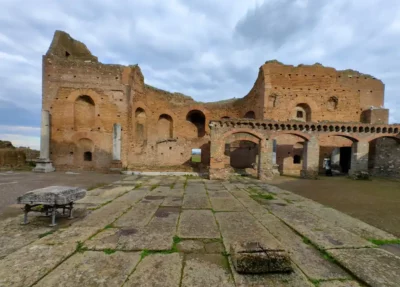
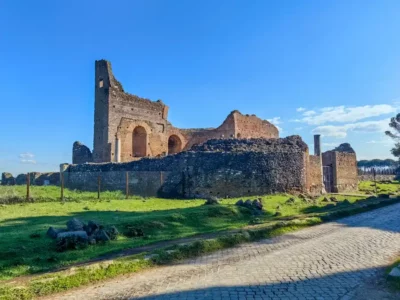
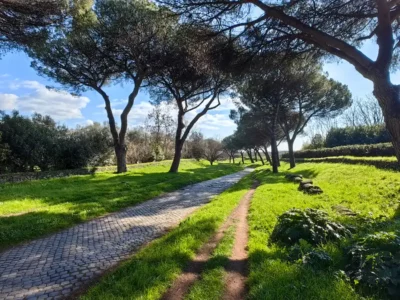
Every 15 metres
History adds mystique to the road. The slave revolt led by the former gladiator Spartacus in 73 BC is familiar. Seventy slave gladiators escaped from the gladiator school and were gradually joined by nearly a hundred thousand others. Within two years, they were plundering estates and towns all over Italy. The last group of 6,000, led by Spartacus himself, was squeezed between two armies and captured in 71 BC, right on the Via Appia Antica. The Romans brutally crucified all the rebels along a 200 km road from Rome to Capua. It is claimed that one was crucified every 15 metres.
The humanity of the Christians is evidenced, on the contrary, by the fact that instead of Romans and the crucified, we were greeted on the road by shepherds with perhaps a herd of sheep and goats a kilometre long. Immediately it was slippery. Yet we don’t believe in reincarnation.
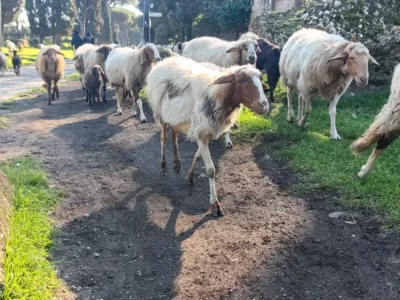
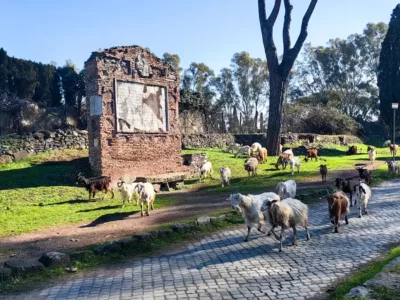
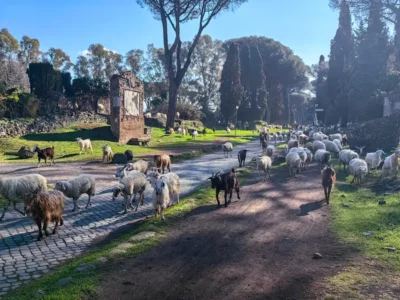
Sheep and oranges
16 km in the legs and especially in the spine. The kingdom behind the whole suspension burner. Admiring the remains of the Roman aqueduct in the distance. We’re getting fed up with the shaking.
We discover the buffet on the stone. Someone has dropped off about a kilo of oranges for us. Janko is cautious, but I don’t hesitate and take a bite. After eating the first one, I understand why they are lying there. I haven’t taken such sour vitamins for a long time.
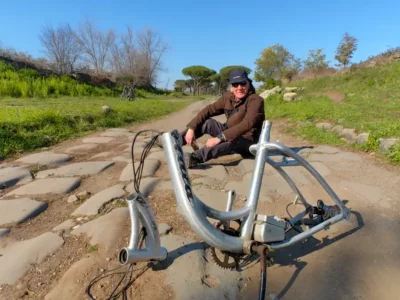

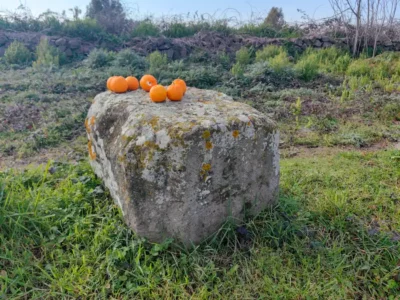
Caracalla Spa
The return journey along the same route is faster. We don’t cost so much anymore. In the evening, we tour the old villas and ruins of the Caracalla Baths as a bonus. They are huge. They once held over 3,500 Romans.

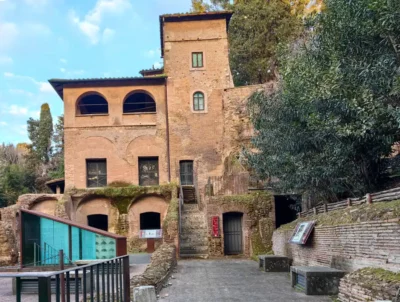
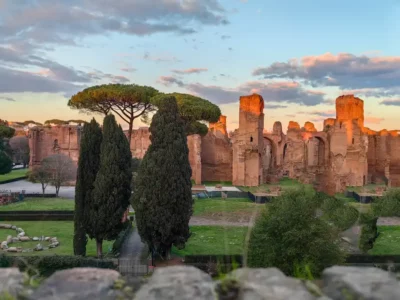
We’ll take another lap around Circus Maximus and drop the bikes off at Easy Bike Rent Roma. We have dinner in the legendary night streets of Trastevere.
Conclusion
Don’t give in to temptation. You can get to Via Appia directly (bus 118 from Colosseo), but this cycling trip in Rome is a must-experience. It definitely dazzled us with its tranquillity and atmosphere more than the Vatican, the Colosseum or the Forum Romanum. You still won’t get far here without a bike, even if it will properly emasculate your spine and bones.
